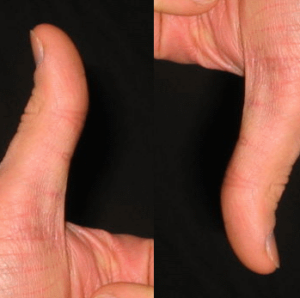
I’m not sure why, but some places do stuff to the scrutinies that makes them less “scrutinish.”
The primary symbol—the main event—in this rite is the exorcism. You can find the exorcism at paragraphs 154, 168, and 175.
There are three things that we need to do well to make the exorcisms as liturgically meaningful as possible.
1. Pay attention to the words
Use the exact words given in the text. Catechumenate ministers are used to adapting texts in the rite because we are so frequently encouraged to do so by the rite itself. However, this is not one of those times. Don’t tinker. And the presider needs to rehearse the text out loud. Focus on the verbs. Practice the gestures as you say the words. Imagine you are brand new to the faith and hearing these words for the first time. What is it the elect most need from these prayers? Focus on that.
If you would like to learn more about how to celebrate the RCIA scrutinies, view the recording of our online workshop during which Diana Macalintal and Nick Wagner covered the essential do’s and don’ts for an awesome celebration. Click here for more information.
2. Laying on of hands
The rite seems to make this optional. I don’t think it’s optional if you want to communicate the power of this rite. The presider should solemnly and prayerfully lay hands on each of the elect. You can add to the solemnity by having the director of the catechumenate also lay hands on each of the elect after the presider. And the godparents can lay hands on their own elect after the director. Solemnly. Prayerfully.
3. Silence is golden
If the laying on of hands is done is deep silence, the power of the exorcism is heightened. Do not underscore this action with music. Do not rush the silence. Let the silence seep into the bones of the elect.
What not to do
These are some elements I have heard that get added into the scrutinies in different places. These things detract from the primary symbolic action I just described. If you are not doing these, pat yourself on your ritual back. If you are doing them just because you’ve always done it that way, then it will be easy to simply stop doing them.
If you are doing one or more of these things because you love them, I’d suggest you take a hard second look at them. Try doing the ritual as given to us in the RCIA one year and then compare that with your adaptation of the rite. Here are some of the things that are added onto the scrutiny that may not serve the rite well.
There are three things that we need to do well to make the exorcisms as liturgically meaningful as possible.
1. Don’t change the exorcism prayer
Some communities rewrite the prayer or add additional words to the prayer. The three exorcism prayers, as given to us, are clear and powerful. There is no compelling reason to change them or add to them.
2. Don’t anoint the elect
The children’s adaptation of the scrutiny (starting at paragraph 295) does include an optional anointing of the catechumens. I don’t know why it is in there. It is not in the adult rite. I’ve discussed my difficulty with the children’s adaptations before, and this just adds fuel to my fire. In the children’s rite, if you do the anointing, you do not do a laying on of hands—which I think is a serious drawback. I think what usually happens in places where the anointing is done is there is both an anointing and a laying on of hands—of children and adults. This is too much stuff for this rite. The anointing seems to detract from the silent power of the hand laying.
3. Don’t add in the Presentations
The Presentation of the Creed is meant to be celebrated at a weekday Mass during the third week of Lent (see RCIA 157). The Presentation of the Lord’s Prayer is meant to take place at a weekday Mass during the fifth week of Lent (see RCIA 178). Adding them into or after the scrutiny rites detracts from the centrality of the exorcism and makes the liturgy seem cluttered.
If you want to celebrate the Presentations on a Sunday, consider doing them in winter Ordinary Time, just before Lent, with those catechumens who will be celebrating the Rite of Election (see RCIA 104).
4. Don’t scrutinize the baptized candidates
Fewer and fewer places seem to be doing this, which is good. This really is something that cannot be done. The scrutinies are only for the unbaptized (see National Statutes for the Catechumenate 31).
5. Don’t scrutinize the assembly
I’ve seen this happen. There were no elect, no baptized candidates, no children preparing for initiation. Just faithful, Communion-going Catholics who knelt down after the homily and scrutinized themselves. This is just not helpful. The scrutinies are not an examination of conscience or a penitential rite for Catholics. They are exorcism prayers in preparation for baptism. By blurring the lines like this, we create a great confusion about the real difference between the unbaptized and the baptized. And that, in turn, diminishes what we teach about true salvation given freely to us in the sacraments of initiation.
6. Reevaluate inviting the entire assembly to lay hands on the elect
I haven’t seen this done, but I’ve heard of places doing it. I’m ambivalent about it. I imagine it could add to the solemnity of the rite if it were done with the same reverence and grace that happens when we venerate the Cross on Good Friday. On the other hand, it seems to me it would extend the rite for an unacceptable amount of time. If you are doing it already, I’d suggest trying it one year without the assembly laying hands. Then compare the two experiences.
The best way to make the scrutinies do what they are supposed to do is to follow the rite. I’m not always in favor of slavishly following rubrics for the sake of sticking to the rules. However, when it comes to the scrutinies, adhering closely to the official rite will best serve our communities and the elect.











Nick, excellent. Regarding your first Don’t, my opinion is that the best solution is to use the RCIA ritual book. Creating your own version of any Rite in a “Ceremonial Binder” is a temptation to write, rewrite and create your own liturgy. Suggestions for the presider can be provided by a simple outline included in the book (with lift-off tape!).
Hi Nick-
the Rituals of the RCIA in Lent and especially the scrutinies are a very frustrating time of the year. I actually had some older parishioners come up to me on Sunday after Mass and say how much they hated the 2nd Scrutiny- “It was disgusting and looked like Father was marrying all those men and it took far too long.” One thing that is done at my parish is one Scrutiny is celebrated at a different Mass each week as a ‘teachable’ moment for the parishioners. Same with Dismissal – a different Mass each week. It’s difficult for the Elect and it obviously has not ‘taught’ the parishioners anything. I’ve put articles in the bulletin about the rituals, I’ve given announcements before Mass begins about the rituals, but they are so poorly celebrated that they appear to be an inconvenient add-on. Help!
Nick, despite doing none of the 6 ‘Do Not’s’the scrutinies felt a little stale to me but to one of our parish candidates they have, so far, been a powerful experience. He spoke of how good it felt to be part of the assembly praying for those who have become friends and how the words made sense when referring to the Elect…so maybe we are getting something right.
Hi Nick,
This past Sunday at the second scrutiny we had a retired priest who helps out when needed. We didn’t do the laying on of hands but the priest asked the entire church to raise their hands as if over the catechumens while he read the prayers. It involved everyone, therefore calling attention to the scrutiny and didn’t take “longer”. I did not receive any feedback as most of the church was concentrating on the 1st of the 2 Confirmation Masses which were to begin shortly after our Mass ended.
Since the scrutinies are done by the priest we have little input to what or how it is done. But it seemed to work but I’m not sure anyone really understands them.
Scruitinies are a delegate rite. I’m not sure our “cradle catholic’s” even know what they are. I had none to do this year, but next year could be a different story. When you say they should be done during a daily Mass, how can this be? Our people work and cannot go to Mass on a daily basis as our Mass is at 8:30 am?? We need to have our Priest’s trained in this area. Some of them do not realize the importance.
Dear Nick and R.C.I.A. Team,
It is my pleasure to read that you desire an awareness about the power of the scrutinies.
The prayers are so powerful. At rehersal Father said the prayers aloud. Their was a reaction that at the next meetng I spoke about the scrutinies.
Now,I speak from the CollaborativeMinistry/Lent/scrutiny material, before the Rites of the Scrutinies. Some people, I found are more ready than others, that is OK. I work with them through the following years.
All in God’s good time.
Blessings!
Sister Ruth
Nick, Very good article. I want to point out one small thing, not as a correction, but as a point that could help others. The instructions for the Presentations say they should be held “during the week…”. It does not specifically say at Mass, unlike the Scrutinies. I mention this because some parishes may have the same issue as we do. Our daily Mass is at 7:45 AM. Many of our catechumens would not be able to attend a daily Mass because of work schedules. We hold our Presentations at our Stations of the Cross on the Fridays of the weeks listed in the Rite. This is still a large gathering of our parish (about 600 people attend each week) and it’s in the evening when the catechumens are able to attend.
I would like to hear your constructive thoughts on this.
Hi Craig. Thanks for sharing this. You are quite right. There is no requirement that the presentions be celebrated at a Mass. Your solution sounds good to me!